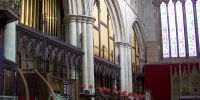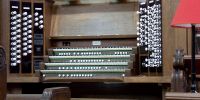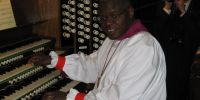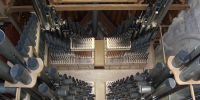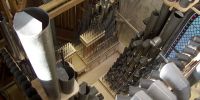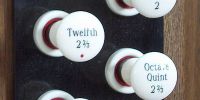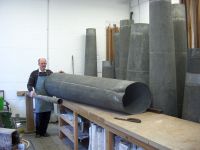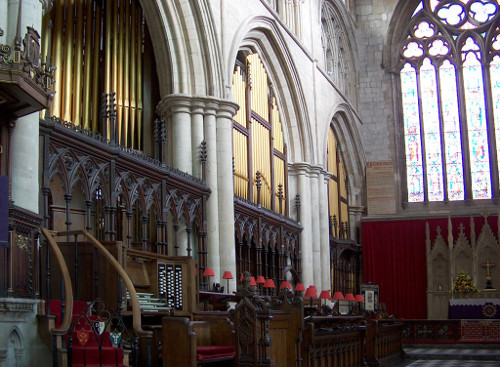
Once one of the largest and wealthiest churches in the country, Bridlington’s Priory Church even boasted its own fleet of ships for the delivery of merchandise such as wool. The town flourished around the Priory and it became a centre of pilgrimage for many. The extensive buildings suffered terribly during the dissolution of the monasteries and now all that remains is the nave. Even so, it is an imposing edifice.
The organ built by Charles Anneessens of Belgium, in 1889, was suitably heroic. It is believed to have had the largest single soundboard and the largest 32ft reed stop in the country.
Successive enlargements by Abbott & Smith (1906), Hill, Norman & Beard (1922), Compton (1949) and Laycock & Bannister (1968) doubled the organ’s size. Whilst the overall sound was impressive, the proliferation of chests, actions and bellows resulted in an organ that was increasingly unreliable and expensive to maintain. In addition, the Anneessens Great pipework was muffled by later additions, becoming only feebly audible in the church. The mechanism and soundboards had become fundamentally unsound and would have continued to be a drain on the Priory’s finances unless the problems had been addressed.
The work carried out by Nicholson & Co in 2005/2006 provided a new organ within the existing case reusing the old pipes. Mechanically, the organ is entirely new, including building frame, soundboards and wind system. The layout was rationalised so that most ranks were placed on new slider soundboards; thus much of the extension was eliminated and the number of note actions was halved. The final specification has 75 speaking stops, of which 15 are new; there are over 4,700 pipes, including many new ranks.
The consultant for Bridlington Priory was Paul Hale and the project was completed by Easter 2006.


